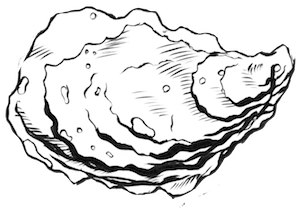.
company:
 HINGELINE: monger.fish
HINGELINE: monger.fish
Hingeline is equal parts VAR (value-added reseller) and storytelling agency. We’re good at picking world-class suppliers of diverse products who have great stories to tell. Hingeline offers turnkey solutions for increasing profitability by providing access to exceptional products and the value-adding stories behind them. Let Hingeline show you how elevating choice quality North Atlantic seafood can do so much for so many.
↓ more…
video overview:
VIDEO SCRIPT: As benefit to human & environmental health, sustainable and not linear fisheries must be employed to feed a shrinking world. We must utilize economic stimulus, more regulation in developing world fisheries, and a higher barrier to entry for susceptible categories of farm raised fish to preserve sea protein as a cornerstone of survival. The window to act lies squarely in our laps despite the recourse, potentially catastrophic, being primed for adoption by our kids.
2.9 Billion people around the Globe are reliant on seafood as a main source of nourishment. Now, fished at unmitigated scale – the same practices used in harvesting this crop from once bountiful Oceans are depleting stocks and biodiversity at an alarming rate. The backlash to this will have drastic impact on us in the United States whether you like it or not! This production model of food is not much different than the hunter-&-gather approach employed by our a primal ancestors. Not many give thought as they wolf down their sashimi that fishing the Oceans has seen limited large scale systems innovation, and is based the falsehood that Oceans are an inexhaustible resource. Modern fishing technologies focus on easier and faster methods to take, but not replenish a required ecosystem balance that depleting practices have greatly disrupted.
Sustainable Fisheries: Part 1
VIDEO SCRIPT: The solution is pretty straightforward – despite being a monumental task. We must partake in being part of natural order by giving back to the sea simply so it can continue to sustain our species, and more broadly, to maintain a stable environment. Long horizon economics present a pretty clear value proposition. And, similarly to addressing climate change & sea level rise (directly correlated initiatives to sustainable fisheries), if we do not heed the warnings we’re destined catastrophic backlash of epic proportion. But, there’s opportunity to better connect immediate impact to economic stimulus through focus on a Blue economy streamlined in the developed world. The only future for future fisheries is a more sustainable one, and that must now be instigated by us; it’s mankind’s duty & opportunity.
In 2010, a significant threshold was crossed when more than 50% of total fish consumed was farm raised. The virtue of this is a bit of a falsehood often used to justify broader unsustainable methods in all sea protein production. A large portion of farm-raised come from pillaging natural fish stocks of young and/or roe without replenishment. What’s proving worse, the vast majority of feedstuff provided to these farm raised fish, especially those higher on the food chain, come from detrimental fishing practice with no mind of sustainable practice in feeding carnivore, omnivore or herbivore alike. Furthermore, the vast majority of fisheries & hatcheries farm raising sea proteins employ deplorable and unhealthy living conditions for the seafood they raise.
Sustainable Fisheries: Part 2
